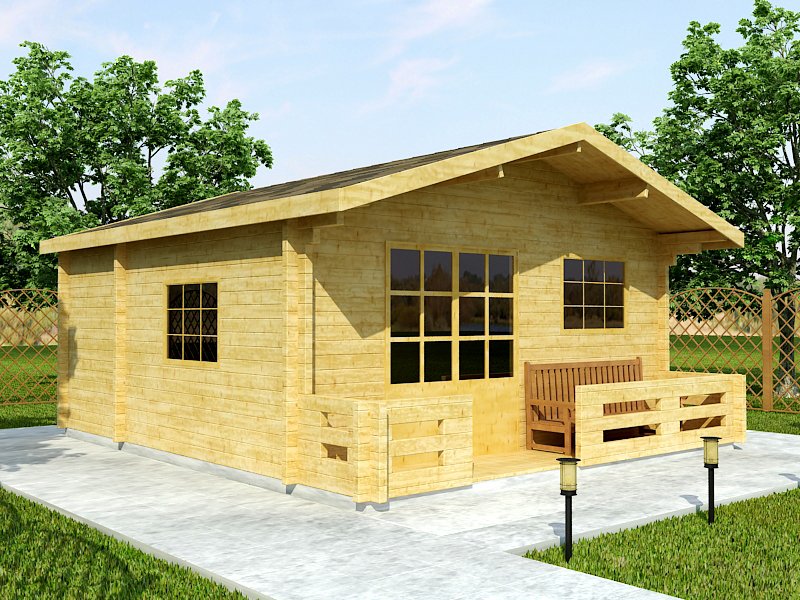
How to Use Color in Garden Buildings

Color can play an essential part in garden design, both unifying and exciting a space. Understanding basic color theory (such as the color wheel) can assist with making more informed choices.
Analogous-complementary color combos bring all of the visual excitement of complementary contrast while being less dramatic and striking. Furthermore, this scheme helps transition seamlessly from its counterpoint as season passes and additional plants come into bloom.
Color echoes
Color echoing is an effective way to create a uniform aesthetic with flowers or foliage, decorative garden elements such as containers, furniture, structures or structures; even something as subtle as windchimes or birdhouses in powder blue set against an otherwise neutral palette can add visual interest and depth.
An echo can be as complex or simple as desired, beginning with one plant with subtle tints like rosebuds or multi-color hydrangea blooms as an easy starting point. From there, look for other sources of similar color such as trim color on your house, paint chip samples or pottery pieces that all provide great starting points for creating your color echoes palette.
While contrasting colors can add visual interest to a garden, too much repetition may quickly lead to boredom. To combat this issue, periodically introduce something unique or different into your composition, like positioning an adjoining color near or adding plants with differing textures or forms – this will keep harmony from becoming too stagnant in your garden while giving it that visual edge that sets it apart from others.
Monochromatic schemes can add depth and character to your garden by employing various shades of the same hue in one design scheme. When executed carefully, monochromatic schemes can be highly effective and visually appealing. Experiment with this approach by planting drifts of certain plants at nursery sales before purchasing them and considering how they would complement other plantings in your landscape – for instance ‘Sunshine’ Ligustrum can be offset with variegated ‘Miss Lemon’ Abelia for an eye-catching visual result! The results will result in stunning gardens full of depth and character!
Complementary colors
Color is one of the cornerstones of garden design. It can set the mood, influence style and provide cohesion between areas within a landscape. Understanding basic color theory will enable you to achieve your landscape dreams more quickly.
Complementary colors sit directly opposite one another on the color wheel, producing striking high-contrast combinations that draw attention. They work especially well when their contrasting hues are fully saturated; otherwise their intensity diminishes quickly. Complementary schemes in gardens can be created using plants and flowers as well as structures like fences and gates; for optimal effect they work best when they achieve full saturation; muted hues reduce its effectiveness.
Garden color schemes often take their cue from nature’s lush landscapes. A sunset might inspire a warm palette with sky blues, grass or sage greens and fiery red hues; while walking through woods may produce hues ranging from grey-green to blue-green and yellow-green shades.
Plants found growing together in meadows and woodlands often form stunning combinations, like purple New England aster (Symphyotrichum novae-angliae) paired with goldenrod (Solidago), or vibrant Virginia bluebells (Mertensia virginica) with sunny-yellow celandine poppy (Stylophorum diphyllum). To achieve similar pairings in your garden, plant perennials and annuals in complimentary colors arranged strategically throughout your yard.
Split-complementary combinations offer another method for matching flowers and plants in complementary color schemes, offering all the energy of complementary and counterpoint compositions while creating less visual tension due to closer proximity of two complements.
Analogous color schemes are among the most harmonious choices, and typically work best when used in groups of threes. Analogous schemes use colors adjacent to one another on the color wheel that blend together naturally – try pairing „Tiny Tim” euphorbia and „Red Emperor” or ‘Madame Lefeber” tulips together as a showcase example, adding foliage for additional depth and dimension to this combination.
Trios
Painting garden structures such as trellises and fences offers gardeners the perfect opportunity to use color theory principles to add vibrancy and contrast to their landscape. By choosing vibrant hues that bring life and harmony into their surroundings, gardeners can craft fascinating combinations that set the scene and shape their environment.
Color wheels and Munsell hue pages provide an excellent starting point to understanding how colors interact. Complimentary hues sit opposite one another on the wheel for striking effects; duos of similar hues offer less dramatic yet still highly contrastive pairings; combinations of three hues called triads provide additional options while remaining balanced as they sit equidistant from each other on the wheel.
Addition of a fourth hue can further amplify visual interest and bring harmony to a color scheme. A square tetrad uses four hues that touch in the center of a wheel for greater visual impact; however, its busy appearance could prove overwhelming when seen up close.
Color schemes in the garden can vary between sections or seasons, from subdued blues and lavenders that revivify shaded areas to bold reds and oranges that create lively social areas in your space.
Understanding color theory when working with plants in your garden is important, but to truly learn to use color effectively the best approach is simply following your instincts and following what brings joy. There are no hard and fast rules when it comes to choosing colors for plants – pick ones that make you happy!
As an example, a purple New England aster (Symphyotrichum novae-angliae) looks lovely when combined with rich yellow goldenrod (Solidago) and lively Virginia bluebells (Mertensia virginica). Plant combinations found in natural settings provide ample inspiration for creating pleasing yet successful garden combinations at home. This method can also serve as an excellent means of finding success when designing garden combinations of your own.